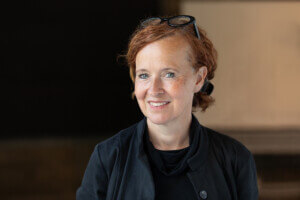In just a few days, ACADIA will host its annual conference at the University of Michigan’s Taubman College of Architecture and Urban Planning. Ahead of the proceedings, The Architect’s Newspaper (AN) spoke with this year’s organizers, Geoffrey Thün and Kathy Velikov—both principals of Ann Arbor, MI- and Toronto-based RVTR and faculty at Taubman College—to get a preview of what to expect from this year’s impressive lineup.
AN: The theme of this year’s conference is Data, Designers, and Cognitive Machines. What is a Cognitive Machine, and what makes this theme especially relevant in 2016?
Cognitive machines are programmed with capacities such as sensing, recognition, decision-making, problem-solving, memory, or autonomous behavior. These are not only an increasing part of interactive and responsive built environments, but are increasingly part of the design process itself. Designers are finding ways to work collaboratively with these processes and procedures, and there will be a significant number of papers at the conference where designers are engaging design and fabrication through feedback-based, co-generative approaches using computational tools.
How would you characterize the range of work you expect to see from the presentations? Are there any ideological opponents, or ongoing debates for attendees to watch out for?
The conference will feature cutting-edge computational design work from around the globe: ACADIA is really an international community, and we’ll have amazing work from North America, South America, the UK, Europe, Asia and Australia. Presentations will range from algorithmic design to robotic fabrication to human-robot collaboration, to interactive design, to synthetic bio-digital material research.
Debate will abound—the climate of ACADIA is a respectful one, less confrontational than some venues, but it’s not a good conference unless there’s at least one heated debate, and we’ll see where exactly that will emerge. We expect that Neil Leach’s paper presentation will produce some ideological frictions.
I understand that hosting the conference at Taubman College has afforded some opportunities in terms of both facilities and faculty. How did this shape this year’s offerings or conversations?
The faculty members of Taubman College co-chairing the conference have been active members of the ACADIA (and broader digital design/computation/fabrication/ robotics) community for years, so hosting this conference is very meaningful to us. The Posthuman Frontiers exhibition, which is running in tandem with the conference, features large-scale interactive installations by Taubman faculty, as well as the jury-selected projects submitted to the conference. The workshops—taking place in the three days prior to the conference—benefit from the amazing fabrication facilities we have in the FabLAB. Participants will be using the digital knitting machine, possibly all five Kuka robots, the five-axis milling machine, and the digital classrooms in the Duderstadt Center.
Attendees will be able to see presentations in some great spaces on the campus—Elizabeth Diller’s keynote, the Philip Beesley and Iris van Herpen lecture, and the main conference proceedings will be held outside Taubman around Ann Arbor. We’ve made an effort to knit many of the events into the town’s fabric, and to connect the proceedings with that broader community of the University of Michigan, so the key evening public lectures and events will be open to the broader public and we hope to engage them with some of the questions and obsessions of the ACADIA community.










